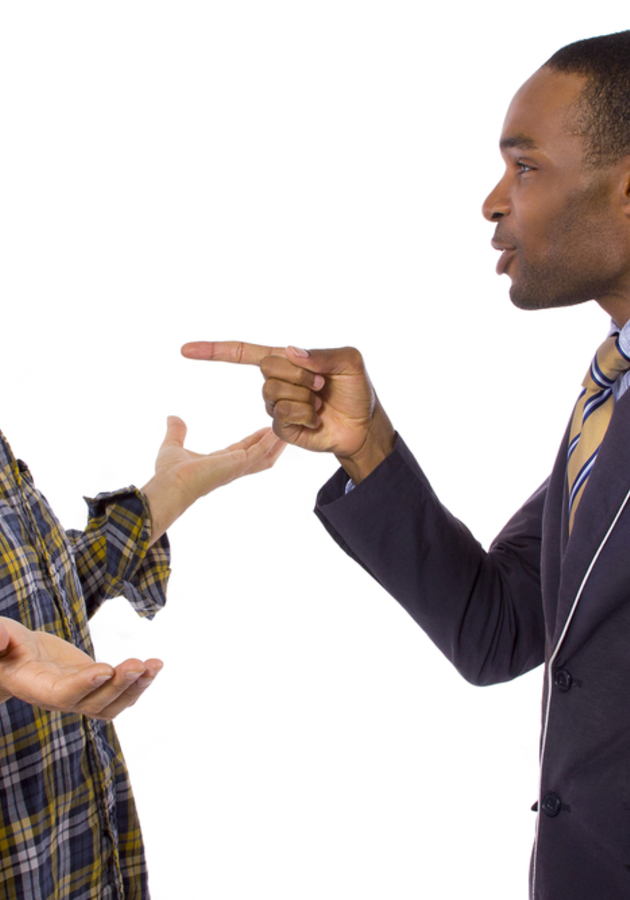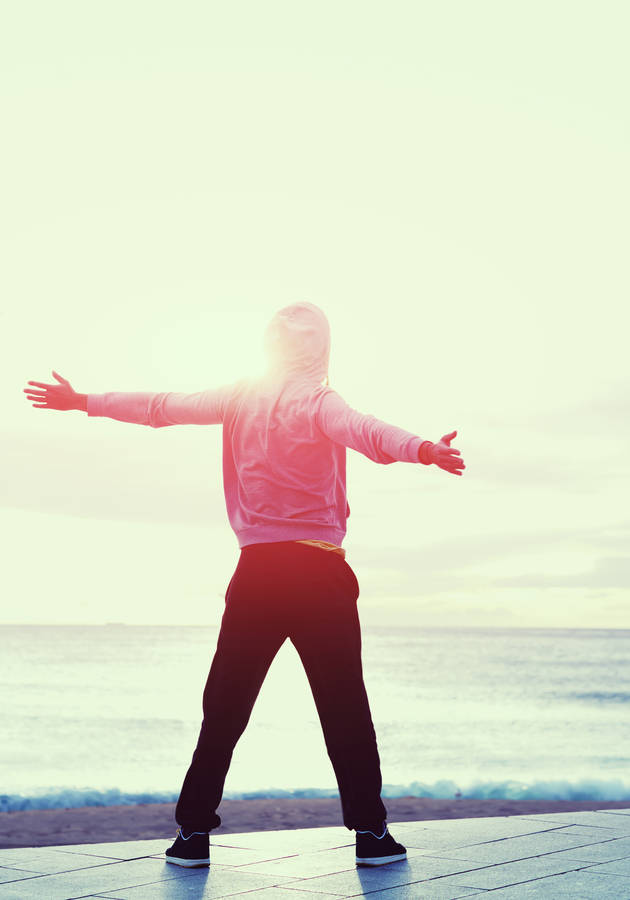Lauded by some as eye-opening and criticized by others as simplistic, “White Fragility” by Robin DiAngelo became one of the most talked-about books in the wake of the Black Lives Matter protests, sparked by the killing of George Floyd. Get ready to find out why!
The pillars of white privilege
“White people, I don’t want you to understand me better,” said once Seattle-based Nigerian American author and activist Ijeoma Oluo. “I want you to understand yourselves. Your survival has never depended on your knowledge of white culture. In fact, it’s required your ignorance.” DiAngelo agrees wholeheartedly with this notion: “Being white,” she says, “shapes our perspectives, experiences, and responses.” And it does so in such subtle and imperceptible ways that most white Americans scoff at the very idea that they might be privileged. But they are – because they share eight “aspects of being in this world” that no person of color has ever experienced:
- Belonging. We are socialized into a world where white is the “default race.” It’s not only that most leaders, authors and celebrities are white – it’s also that most leaders, authors and celebrities have been white. In 2017, when singer Rhianna introduced a makeup line for women of all skin colors, many women of color tweeted their gratitude in exclamatory phrases such as “Finally!” No white woman has ever needed to say that.
- Freedom from the burden of race. White people don’t carry “the psychic weight of race.” That is, they don’t have to worry about how others feel about their race. Simply put, racism just isn’t their problem: their race will rarely – if ever – be held against them.
- Freedom of movement. White people are free to move in “virtually any space seen as normal, neutral, or valuable.” On paper, black people can as well. However, in reality, they can never be as relaxed in numerous spaces and situations.
- Just people. Even if only subconsciously, the white race is held up as the norm of humanity. Case in point: it is never even named in most situations. White people are just “people,” and their views are just “views.” Somehow, white authors such as Dostoevsky and Dickens represent the universal human experience, while writers such as Maya Angelou, Amy Tan or Sandra Cisneros represent only the experience of blacks, Asians, or Chicanos. White people are just human; people of color are racialized humans.
- White solidarity. White solidarity is “the unspoken agreement among white people to protect white advantage and not cause another white person to feel racial discomfort by confronting them when they say or do something racially problematic.” Put simply, white people are rewarded for not “interrupting” racism among other whites, and punished for the opposite. If a white person is silent when another makes a racist remark, they are subconsciously branded good sports and team players. If they say something to interrupt racism, they are “humorless” or “just too politically correct.”
- The good old days. Though seemingly innocuous, the concept of “the good old days” can only be understood and perpetuated by white people. “Claiming that the past was socially better than the present is also a hallmark of white supremacy,” remarks DiAngelo. “The past was great for white people (and white men in particular) because their positions went largely unchallenged.” There were no “good old days” for black people, ever. They were either slaves or explicitly segregated up until a generation or two ago. And yet, Donald Trump won the 2016 presidential election by triggering the “good old days” nostalgia in people. Make America great again. Nice. But for whom?
- White racial innocence. Even if not explicitly, white people tend to associate black people and Latinos with criminality. It has been well documented that blacks and Latinos are “stopped by police more often than whites are for the same activities and that they receive harsher sentences than whites do for the same crimes.” Moreover, research shows that for white people, the safety of a neighborhood directly correlates to the number of people of color living there.
- Segregated lives. Segregation is not a thing of the past. Implicitly, it still directs the decisions of many white people. Most of them say they select the schools for their children on the basis of test scores, but a 2009 study revealed that the racial makeup of a school plays a much larger role in the decision. More strikingly – and this phenomenon has been studied so thoroughly that it even has a name: “white flight” – when a formerly white neighborhood reaches a 7% black threshold, white people start migrating. Similarly, in neighborhoods with more than a few black families, white housing demand tends to decline.
Defining the operative terms
Most people misunderstand the idea of “white privilege;” or even worse, they understand it in quite a simplistic manner. Of course, “white privilege” doesn’t entail the understanding that all white people have it easy – there are many who start at the very bottom and are forced to work hard to even survive in the highly competitive American society. But that’s a class problem, a problem of inequality, and one that affects everybody. “White privilege,” on the other hand, is a problem of race – one that doesn’t affect white people.
There are many other terms that people don’t understand or use incorrectly when talking about racial issues. To understand their nature and complexity, you need to be able to distinguish between them. Let’s do that.
- Racial prejudice. Prejudice is “pre-judgment about another person based on the social groups to which that person belongs.” It consists of “thoughts and feelings, including stereotypes, attitudes, and generalizations that are based on little or no experience and then are projected onto everyone from that group.” Most people claim they are not prejudiced, but that is impossible: prejudice is unavoidable because that is how our minds categorize experiences. “Prejudice is foundational to understanding white fragility,” explains DiAngelo, “because suggesting that white people have racial prejudice is perceived as saying that we are bad and should be ashamed. We then feel the need to defend our character rather than explore the inevitable racial prejudices we have absorbed so that we might change them. In this way, our misunderstanding about what prejudice is – protects it.”
- Racial discrimination. If prejudice entails thoughts and feelings, discrimination involves actions – anything from ignoring and excluding through ridicule and slander to threats and violence. Understood in its simplest terms, discrimination is “action based on prejudice.” Just as everyone has prejudices, everyone discriminates as well. If it wasn’t so, there would have been no jokes and they wouldn’t have been funny. Our thoughts and feelings profoundly affect our actions, but, generally speaking, we control what we do much more effectively than what we think – not the least because there are social pressures and laws which limit the one and not the other.
- Racism. “Everyone has prejudice and discriminates, but structures of oppression go well beyond individuals.” When a racial group’s prejudice is backed by the power of legal authority and institutional control, that is when it is transformed into racism, “a far-reaching system that functions independently from the intentions or self-images of individual actors.” Put succinctly in the words of J. Kēhaulani Kauanui, professor of American studies and anthropology at Wesleyan University, “racism is a structure, not an event.” And as a structure, it is deeply complex, nuanced and internalized in American society.
The creation of race and the establishment of racism
Contrary to popular belief, racism doesn’t begin in biology, but in society. However, the belief that race and the differences associated with it are biological is so deep-seated that the following sentence might sound strange to many people: as we know it, race doesn’t really exist. The differences we see with our eyes, such as eye color or hair texture, are superficial and the results of geographical adaptations. Or rephrased a bit more scientifically, “the external characteristics that we use to define race are unreliable indicators of genetic variation between any two people.”
However, that’s not what the Founding Fathers thought. They may have created the first country in history based on the idea that all men are created equal, but most of them were slaveowners at the time. Their way of dealing with the discrepancy between their ideals and their actual practices? Finding scientific basis for their prejudice. For example, in “Notes on the State of Virginia,” Thomas Jefferson – the principal author of the Declaration of Independence – suggested that there were natural differences between the races and asked scientists to find them. And they certainly did do that – after inventing them. In reality, they never even bothered asking the question “Are blacks (and others) inferior?” Instead, they asked, “Why are blacks (and others) inferior?”
So, in less than a century, Jefferson’s suggestion of racial difference turned into a “scientific” fact, giving European Americans both the moral and legal right to exploit African Americans. And that’s how the ideas of “whiteness” and “blackness” emerged. They were never meant to denote genetic or racial differences, but differences in status and power. “There was no concept of race or a white race before the need to justify the enslavement of Africans,” explains DiAngelo. “Creating a separate and inferior black race simultaneously created the ‘superior’ white race: one concept could not exist without the other. In this sense, whites need black people; blackness is essential to the creation of white identity.” Ironically, belief in racial inferiority is not what triggered unequal treatment – it was the other way around. “The idea of racial inferiority was created to justify unequal treatment,” DiAngelo says. Ta-Nehisi Coates phrases this even more pithily: “Race is the child of racism, not the father.”
Modern adaptations of racism
Though established on the notion of equality, the United States had to go through several major transformations to produce a legal framework more aligned with its radical founding ideas. In 1865, slavery was abolished. But even afterward, one had to be legally classified as white to have citizenship. So, as bizarre as it might sound, many people racially categorized as non-whites began to petition the courts to be reclassified. With the help of a scientific witness who substantiated their claim that they were “Caucasians,” Armenians won their case and the right to be deemed white people in the 1920s. Though also classified as “Caucasians,” Asian Indians didn’t. “To justify these contradictory rulings,” explains DiAngelo, “the court stated that being white was based on the common understanding of the white man. In other words, people already seen as white got to decide who was white.”
After the civil rights movement and its resulting landmark legislation, overt political racism stopped being politically palatable. Nowadays, virtually nobody claims to be racist anymore. So, why are so many academics claiming that racism still exists and that it permeates society? What are they talking about precisely? Surely, they are not thinking of white supremacist groups! Because, after all, at the Unite the Right anniversary rally in August 2018, there were no more than 50 people. As problematic as it is, the overt racism of those 50 people isn’t what scholars are calling attention to in most cases. It’s the modern adaptations of racism they are worried about – because though not as violent and obvious, they are as unjust and bad:
- Color-blind racism. Based on a famous line of Martin Luther King’s “I Have a Dream” speech, color blindness began as “a well-intentioned strategy for interrupting racism.” However, it evolved in a practice that is nowadays inadvertently holding systemic racism in place, precisely by dismissing and downplaying its realities. Countless studies show that people of color are discriminated against even after getting a more just legal framework. Consequently, even if it challenged racism half a century ago, adapting race-neutral language challenges racism no more.
- Aversive racism. Practiced by well-intentioned people who see themselves as progressive and educated, aversive racism is a “subtle but insidious form” of racism, because it allows its perpetrators to be racist while maintaining a positive self-image. These are people who casually dismiss the past from the equation and attribute inequality between white people and people of color to causes other than racism. You can hear them using phrases such as “urban,” “underprivileged,” or “good neighborhoods” – not to mention, “I have lots of friends of color.” While convinced in their moral superiority, aversive racists are both implicitly biased and discriminative in their actions. For example, they’ll always choose a good all-white school for their children, but ascribe the choice to personal care and concern, or even a hard-to-turn-down scholarship.
- Cultural racism. Explicitly, millennials are the most tolerant American generation in history; polls repeatedly show that they are less concerned with race and more concerned with equality than their predecessors. And yet, 41% of white millennials believe that government pays too much attention to minorities, and 48% think that discrimination against whites is as big a problem as discrimination against people of color. This discrepancy lies at the heart of cultural racism. Before the civil rights movement, most white students didn’t even care to act nice toward people of color. On the other hand, the white students of today act overly nice – going so far to even ferociously correct other people using racial terms or labels. However, behind the racially-coded words and all those black mannerisms, the implicit bias is still there. In fact, the niceness is a way of compensating for it.
The good/bad binary and white fragility
All in all, white people have a simplistic understanding of what racism is, linking it almost exclusively to white supremacists. Precisely because of that, they become unaware of their racial bias which leads them to choose schools and neighborhoods based on whether they are populated by whites or people of color. It also leads them to rationalizing these decisions in ways unrelated to racial politics. Simply put, most whites deem themselves “good” because they never discriminate against people of color consciously. In their eyes, racists are “bad” people whose racism is ingrained in intentionality. This simplistic idea that racism is limited to “individual intentional acts committed by unkind people is at the root of virtually all white defensiveness on this topic.”
And that’s what white fragility essentially is. “If I believe that only bad people are racist,” explains DiAngelo, “I will feel hurt, offended, and shamed when an unaware racist assumption of mine is pointed out.” As a result, in response to this “racial stress,” I will rebel with self-justification and “outward display of emotions such as anger, fear, and guilt,” or “behaviors such as argumentation, silence, and leaving the stress-inducing situation.” According to DiAngelo, the central problem of it all is that the attempt to prove one is a good person is also an attempt in reinstating the “white racial equilibrium.” Because, in reality, having racist assumptions as in individual – as we demonstrated above – is inevitable. Not wanting to admit them surreptitiously upholds the position of power and moral superiority that has been granted to white people historically.
In the United States, this problem is exacerbated by a few fundamentally American philosophies of life, such as individualism, meritocracy, and objectivity. Together, these three constantly push white Americans into rationalizing their racial prejudices, and believing they are objective in their rationalizations. A person of color is in this or that situation not because of the well-documented and systemic racial bias passing through both the past and present, but because of some lack of qualities or skills. “When we move beyond the good/bad binary, we can become eager to identify our racist patterns because interrupting those patterns becomes more important than managing how we think we look to others,” concludes DiAngelo. Coming clean is the first and crucial step, because then – and only then – white people might start feeling gratitude when their unaware racist assumptions are pointed out. The process of changing them, by definition, cannot start before.
Final Notes
In its attempt to expose the dangerous and to-a-fault simplistic understanding of racism in modern days, Robin DiAngelo makes a few simplifications herself.
Even so, “White Fragility” is an important and valuable book – if merely for the numerous debates it sparked immediately after publication.
12min Tip
Stop thinking of racist acts as intentional and perpetrated by bad people. Face your implicit racial bias.





























